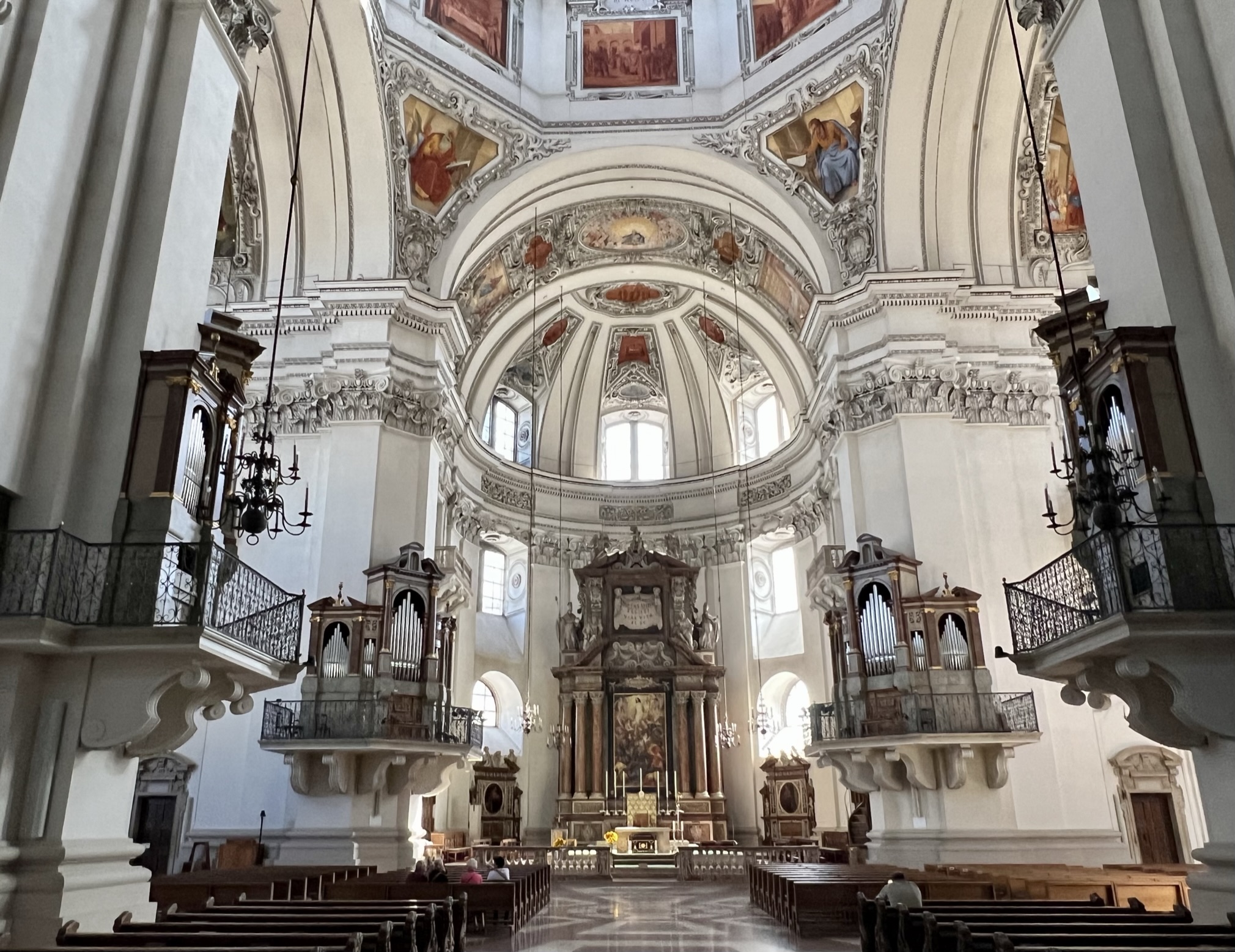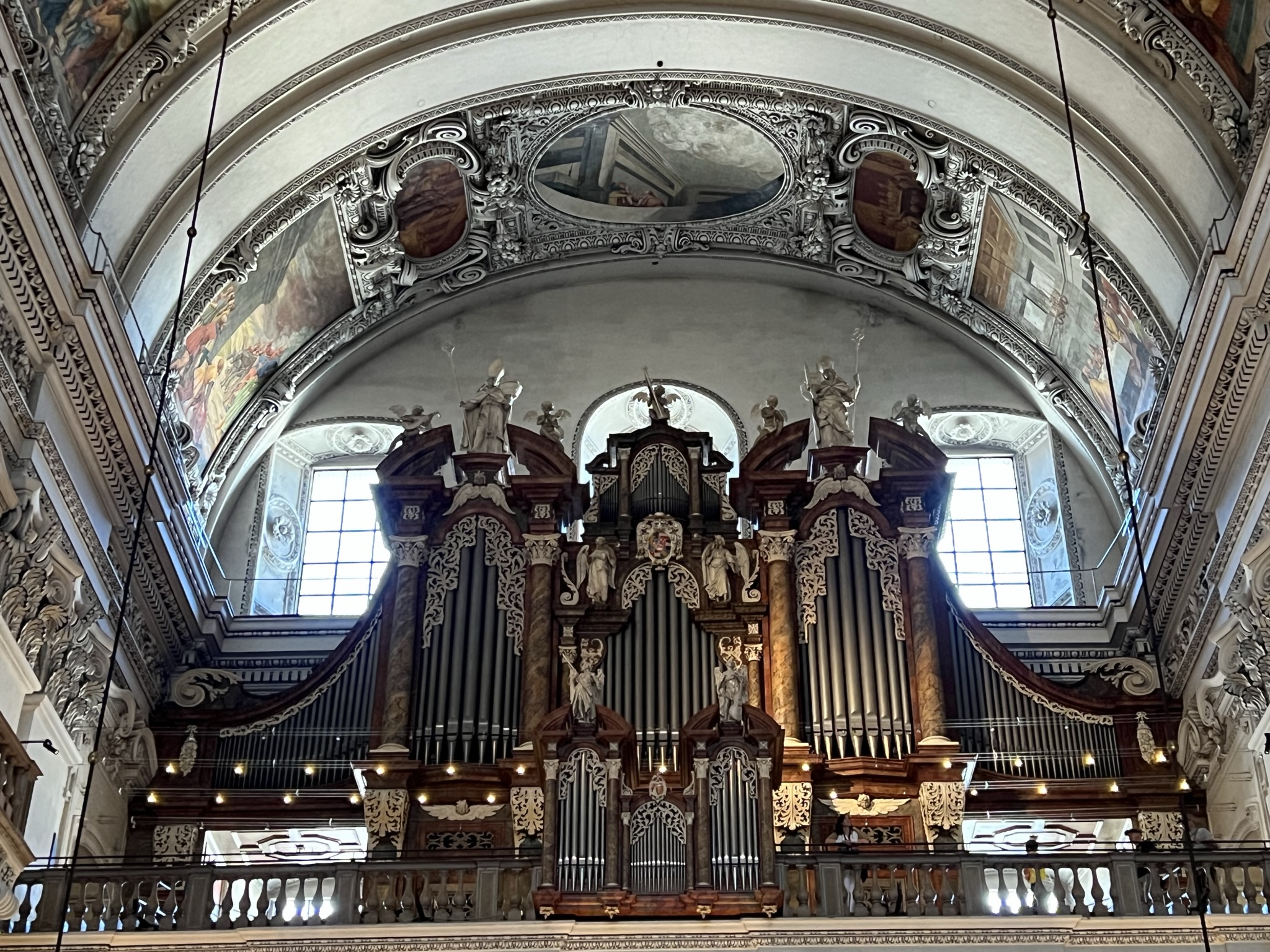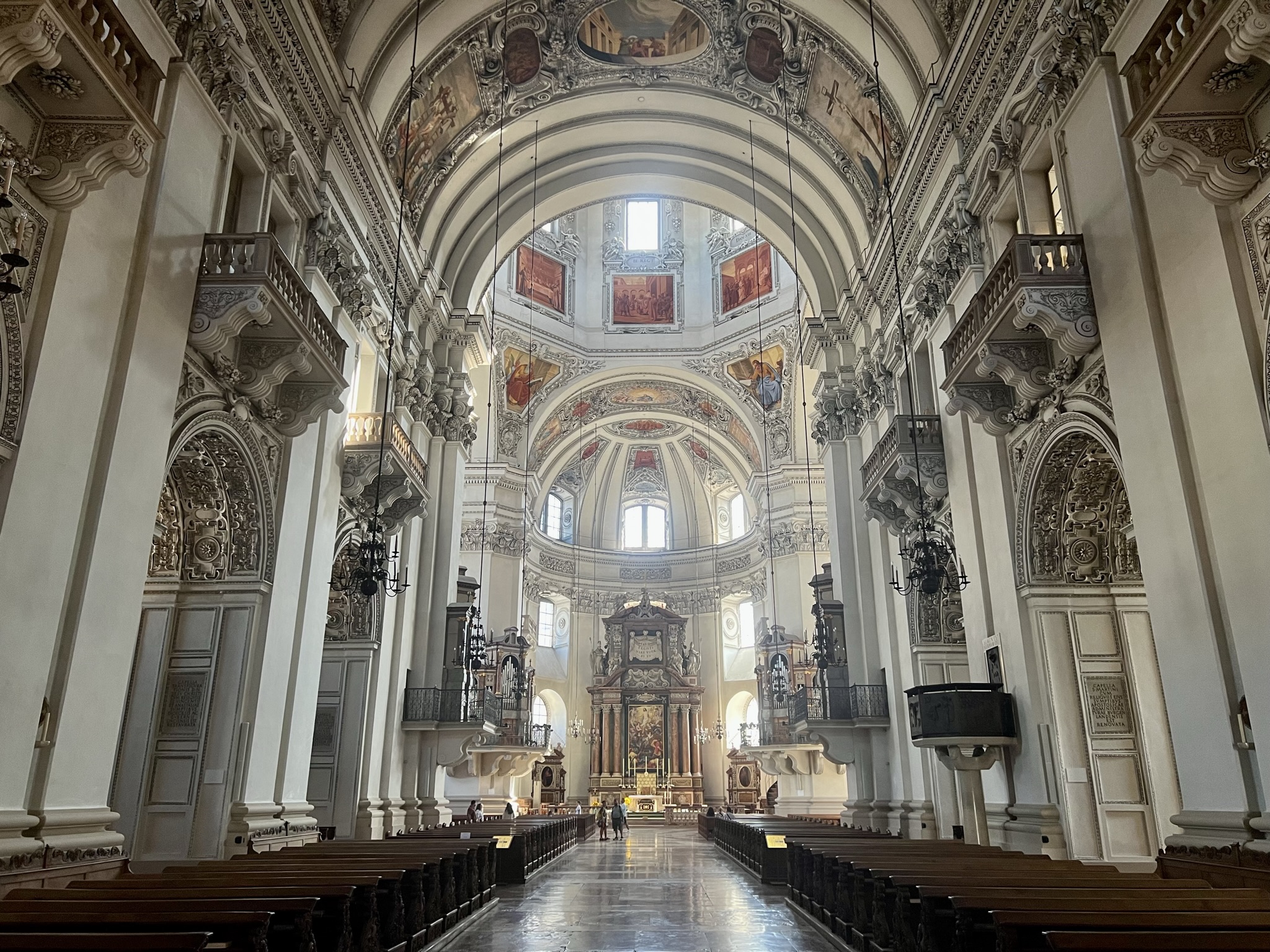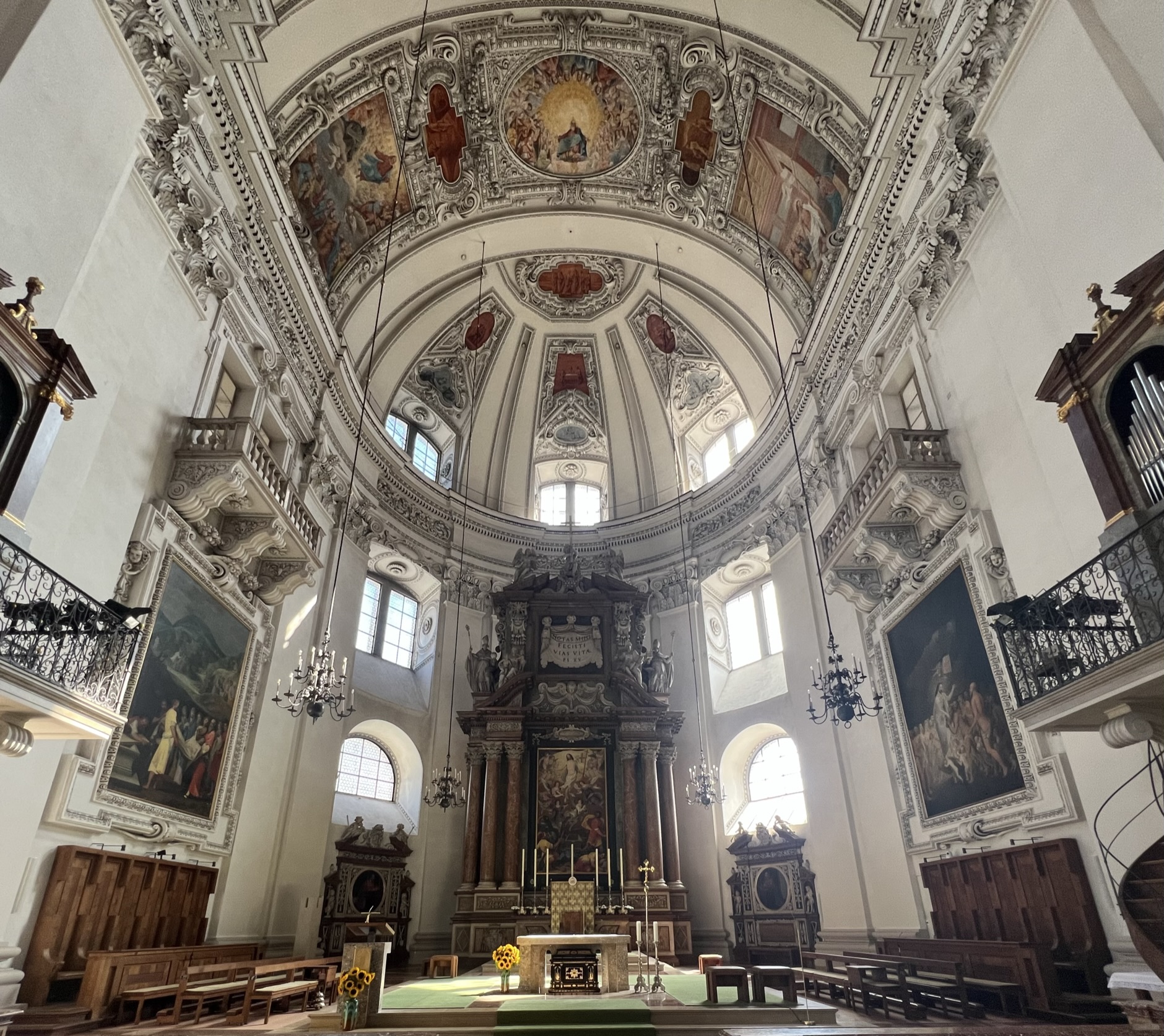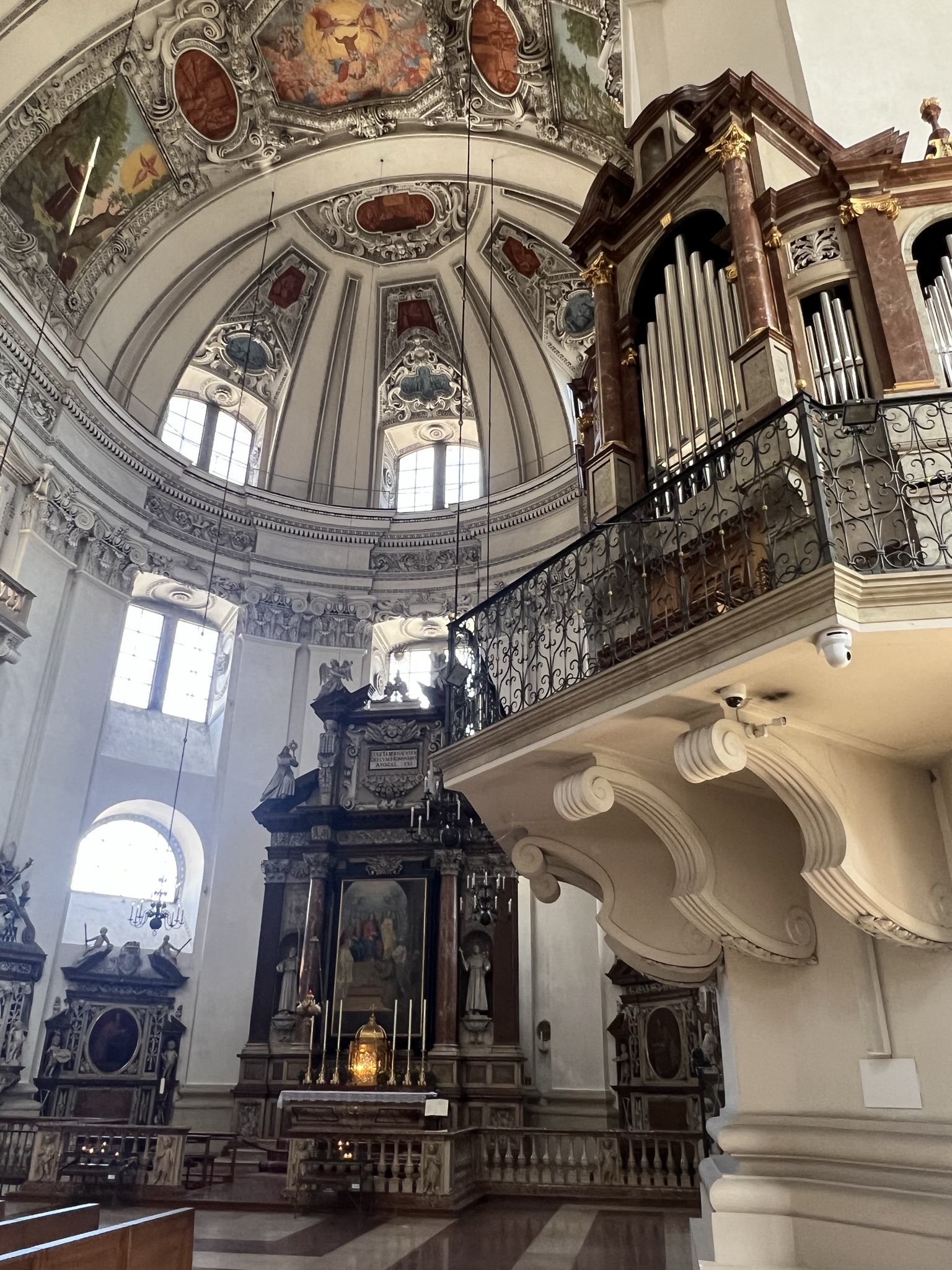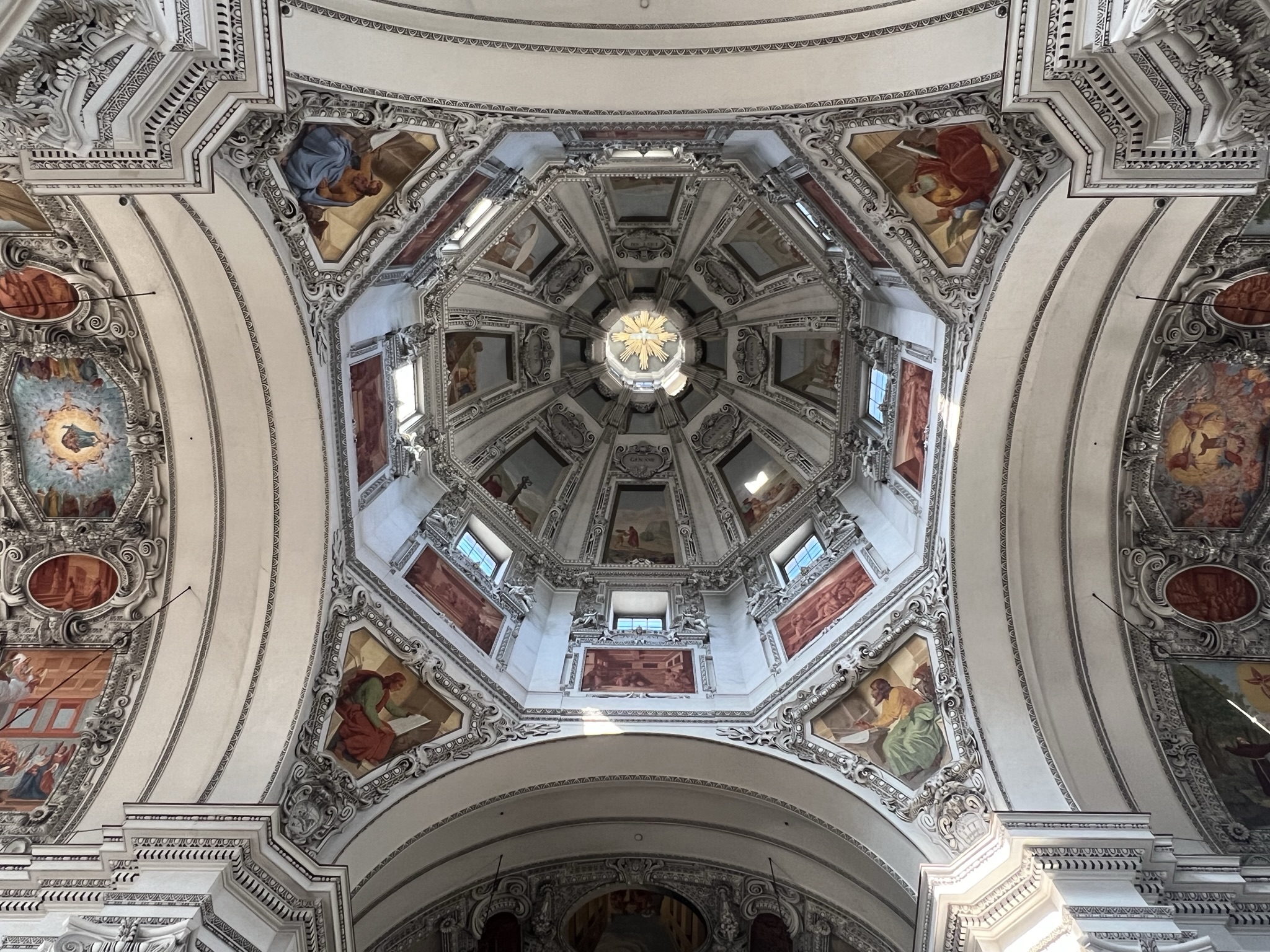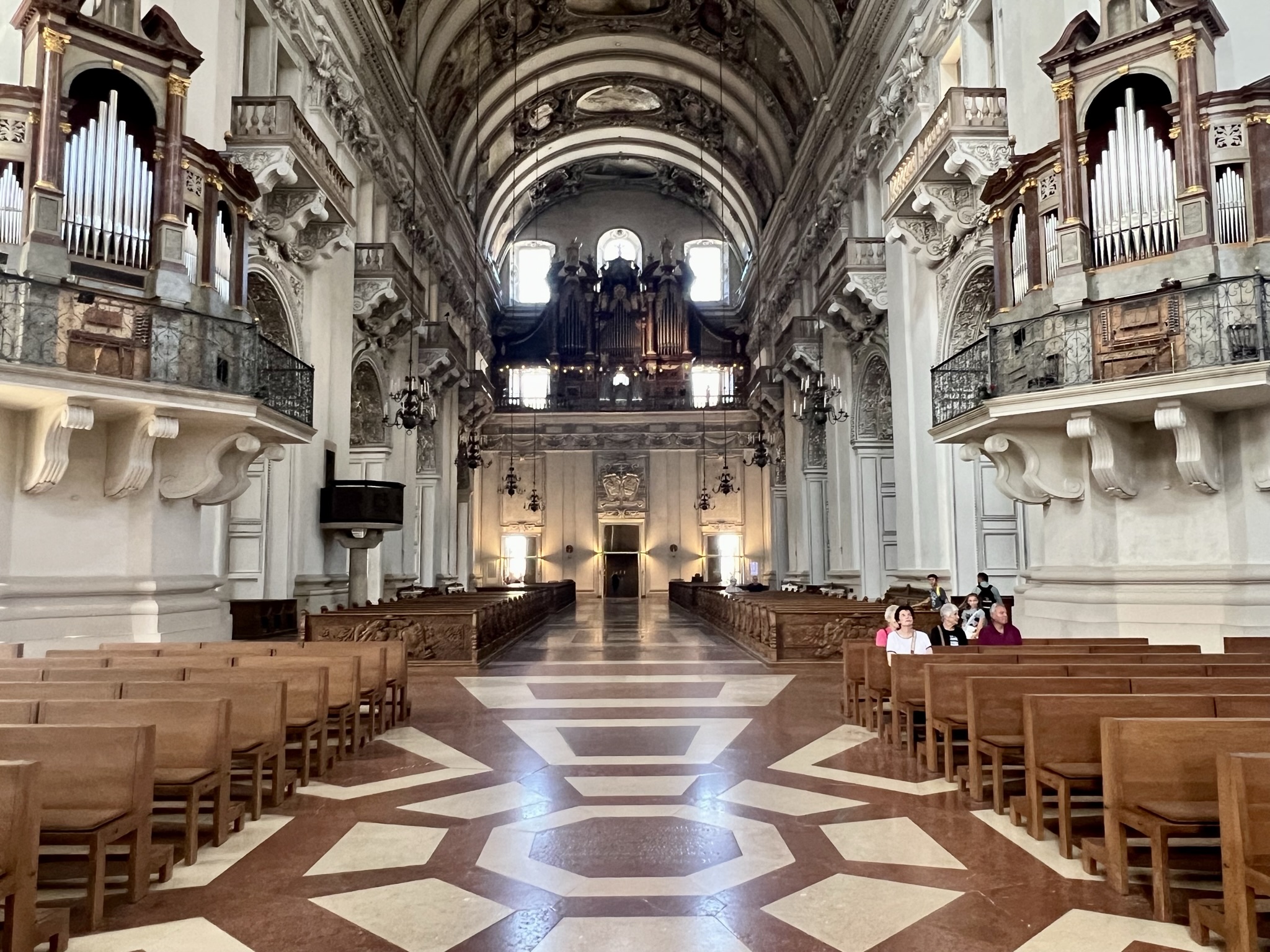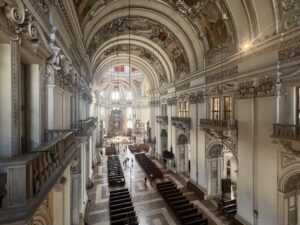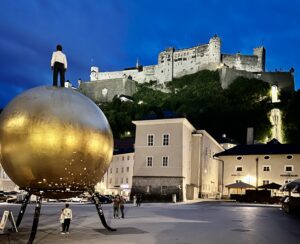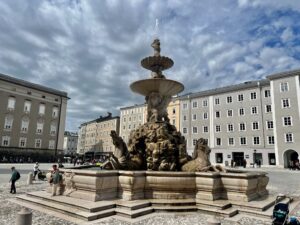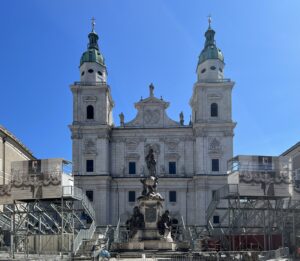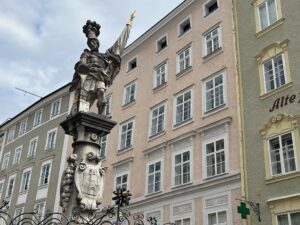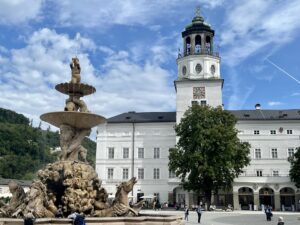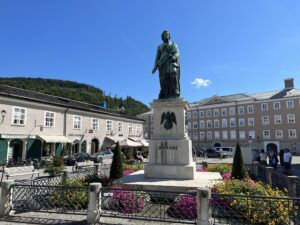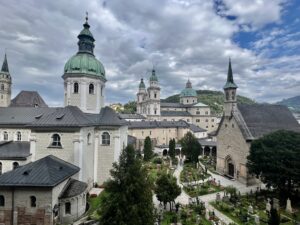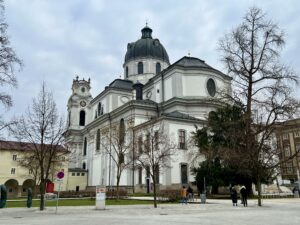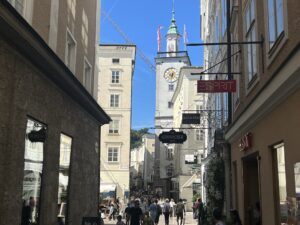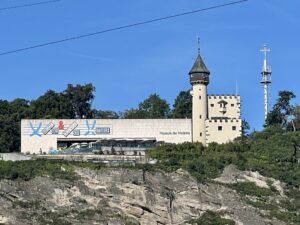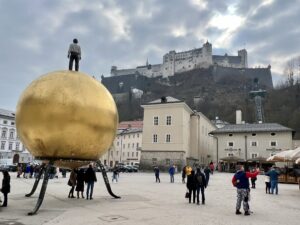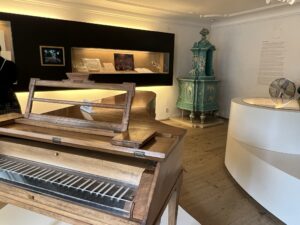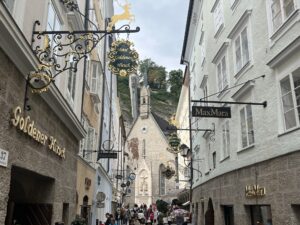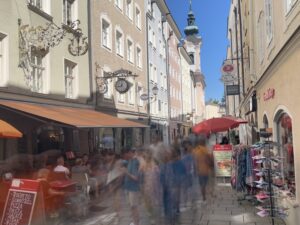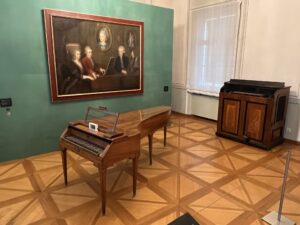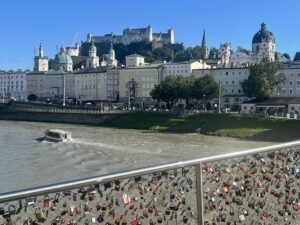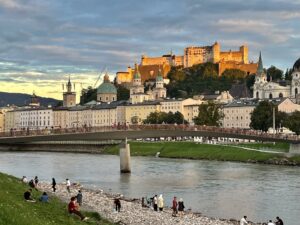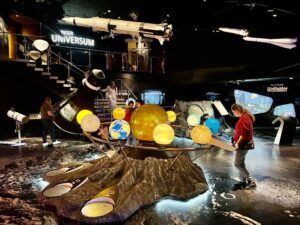Brief information:
- What is the Salzburg Cathedral? The most important sacred building in the city Salzburg
- Where is it located? Cathedral Square 1a, 5020 Salzburg
- What is there to see? Baptismal font, an organ and art
- When are the opening hours? 8-18h. Here you will find All times.
- How much is the entrance fee? 5.00 Euro per person (children and young people up to 18 years have free admission)
- How much time should I allow? 30min to 1h
The cathedral is the heart of Salzburg. Inside there are a wealth of impressive discoveries to be made: the baptismal fontwhich mysterious crypt, the impressive art installation “Vanitas” and the Reliquary with the remains of Saints Rupert and Virgil.
The interior of the cathedral
Among the cathedral’s precious treasures is the bronze baptismal font from 1311 with the lions from 1200, in which Wolfgang Amadeus Mozart and Joseph Mohr, the lyricist of “Silent Night, Holy Night”, were baptized.
The magnificent Main organ, the cathedral gates by Schneider-Manzell, Mataré and Manzú and seven bells are other impressive parts of the decor. The three gates symbolize faith, love and hope, with the middle gate of love being slightly larger. The seven bells have names, from the largest, Salvator, to the smallest, Barbara.
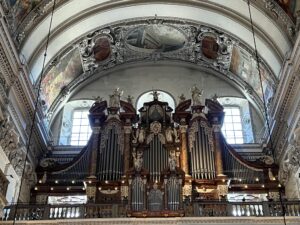
The Crypt
The current form of the cathedral crypt was only created after the reopening in 1959. Before that, there were graves similar to those in the side chapels that were accessible from the church ceiling and served as the final resting place for the Salzburg archbishops. During the Second World War, a bomb destroyed the dome of the cathedral and the crypts beneath it. During the clean-up work, foundations of earlier cathedral structures were discovered and it was decided to create a walk-in crypt with a concrete ceiling.
The crypt has the main function of burying the deceased Salzburg archbishops since the death of Prince-Archbishop Marcus Sitticus von Hohenems in 1619, who initiated the construction of the cathedral. It is divided into different areas, including a chapel for religious services. In the 1990s, the access to the lower church was moved, allowing the creation of an "adoration chapel" where the Blessed Sacrament can be venerated.
The cathedral crypt is open Monday to Saturday from 10:00 a.m. to 5:00 p.m. and on Sundays and religious holidays from 1:00 p.m. to 5:00 p.m. It may be closed during church services and cathedral concerts and also for organizational or technical reasons without prior notice.
Cathedral Museum
The Cathedral Museum is located in the south oratory, which extends over the southern aisle chapels of the cathedral. Its permanent exhibition presents treasures from the cathedral treasury as well as works of art from the 8th to the 18th century, which come from churches and monasteries of the Archdiocese of Salzburg. It is part of the museum complex “Cathedral Quarter”, which also includes the Museum St. Peter, the Residence Gallery and the opulent rooms of the Residence. This museum complex can be explored as part of a comprehensive DomQuartier tour. During this tour, you will pass through a variety of rooms that were once part of the Prince-Archbishop's residence, as well as the "upper floors" of the cathedral, even directly past the organ.
The architecture of the cathedral
Salzburg Cathedral is an impressive example of early Baroque. The magnificent main façade made of Untersberg marble welcomes visitors. It is decorated with four monumental statues: the apostles Peter and Paul with a key and sword, and the patron saints Rupert and Virgil with a salt barrel and a model of the church. The two coats of arms on the gable are a reminder of the cathedral's builders, Markus Sittikus and Paris Lodron. The cathedral square with the Marian column serves as an atrium and is the setting for the Everyman of the Salzburg Festival and the popular Christmas market every year.
The history of the cathedral
The first cathedral, built in 767 under Bishop Virgil and consecrated in 774 in honor of Saints Peter and Rupert, was rebuilt even more magnificently by Archbishop Conrad III after a fire in 1167. It is considered the most powerful Romanesque cathedral north of the Alps. Remains of these two predecessor buildings can still be seen in the crypt today.
Another fire destroyed large parts of the cathedral in 1598. Archbishop Wolf Dietrich began reconstruction, but it was only completed under his successor Markus Sittikus. He commissioned the architect Santino Solari to build the first early Baroque church north of the Alps. The new cathedral was consecrated in 1628 by Archbishop Paris Lodron. In 1944, an aerial bomb damaged the dome and parts of the chancel. In 1959, Salzburg Cathedral was reopened in its former glory. With around 900 seats, it offers space for believers and visitors alike.

